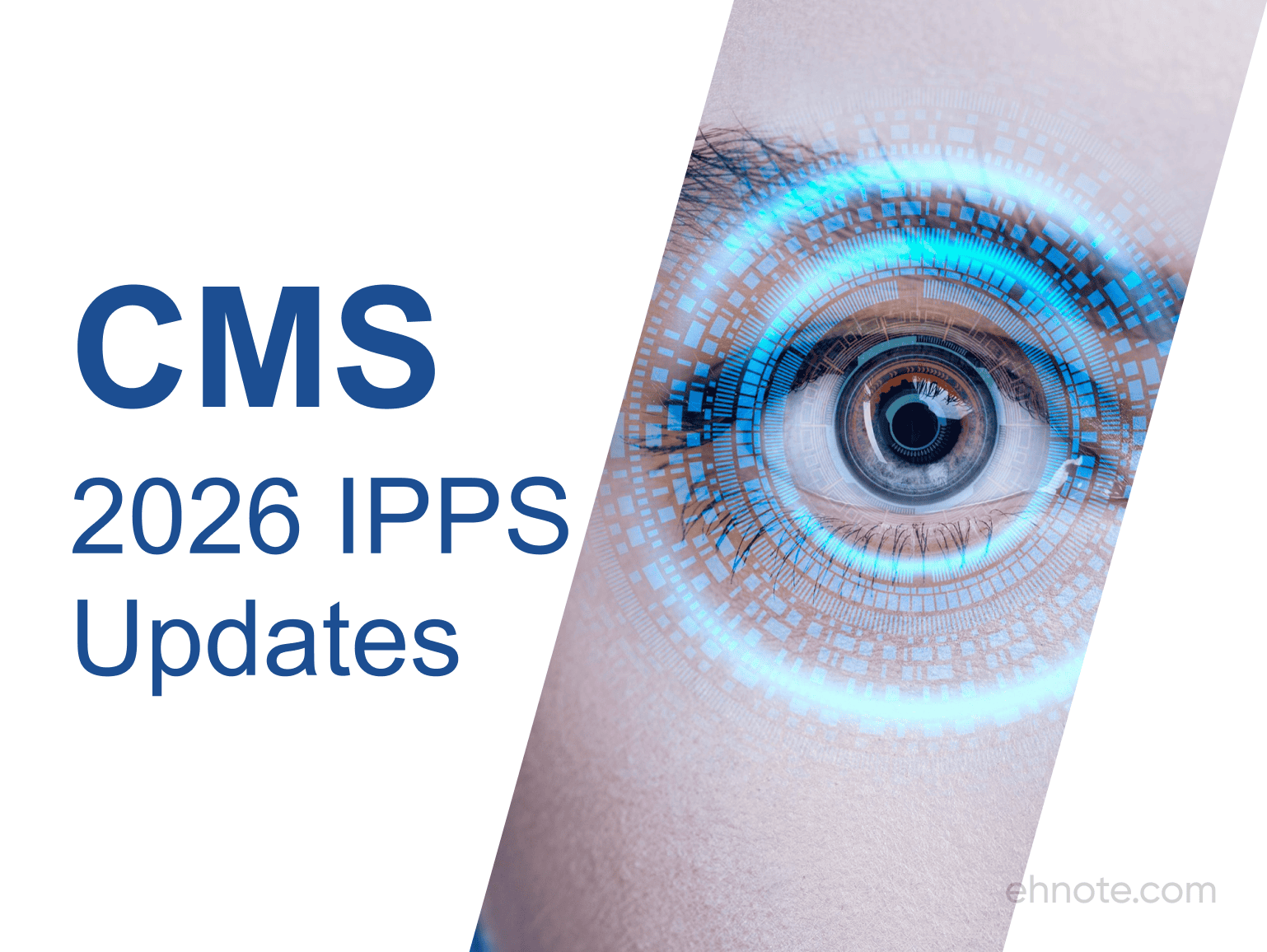2026 IPPS Updates: What Ophthalmology Practices Need to Know

As of October 1, 2025, CMS has enforced the FY 2026 Inpatient Prospective Payment System (IPPS) updates — bringing some of the most significant changes to reporting, documentation, and reimbursement rules in recent years.
While IPPS is designed primarily for hospitals, its impact reaches outpatient and specialty environments — including ophthalmology practices and ASCs — because the same standards shape compliance, coding precision, and quality reporting benchmarks that feed into MIPS and related programs.
For ophthalmology leaders, this isn’t just administrative news. It’s a chance to strengthen operational precision, minimize missed reimbursements, and ensure every documented procedure aligns with the latest compliance framework.
Key Policy Updates for FY 2026
Each year, CMS revises IPPS policies to fine-tune how hospitals — and by extension, specialists who bill through hospital-based systems — are reimbursed. The FY 2026 Final Rule focuses on data accuracy, coding transparency, and response to extraordinary circumstances that may affect reporting.
Here are the changes that matter most:
1. Extraordinary Circumstances Exception (ECE) Policy Codified
CMS has finalized its proposal to formally codify the Extraordinary Circumstances Exception for major programs, including:
- Hospital Inpatient Quality Reporting (IQR)
- Value-Based Purchasing (VBP)
- Hospital Readmissions Reduction (HRR)
- Hospital-Acquired Conditions (HAC) Reduction Program
The ECE allows hospitals and eligible facilities to request temporary relief from quality data reporting when unforeseen events — such as disasters or infrastructure breakdowns — make timely reporting impossible.
Requests can be submitted within 60 days of the event.
For ophthalmology practices working with hospital partners or shared systems, this codification underscores one principle: data integrity must be maintained, but flexibility now exists for verified disruptions.
2. COVID-19 Measure Exclusions Removed
The pandemic-specific exclusions that once shielded reporting gaps under the Hospital IQR program are now ending.
CMS is removing the COVID-19 exclusion from several critical measures, including:
- Mortality after stroke (MORT-30-STK)
- Hip/knee complication tracking (COMP-HIP-KNEE)
- Excess days in acute care after AMI, Heart Failure, and Pneumonia
- Hybrid hospital-wide readmission and mortality measures
Translation: normal data reporting expectations are back.
Ophthalmology ASCs and clinics with hospital affiliations will need to ensure consistent, timely data capture across all integrated systems. Missing quality metrics now directly affects overall facility scoring — and by extension, reimbursement alignment.
3. MS-DRG Revisions
CMS is fine-tuning the Medicare Severity Diagnosis-Related Groups (MS-DRGs) to reflect better resource use and procedural complexity.
For FY 2026:
- 6 MS-DRGs have been deleted
- 5 new MS-DRGs created
- 6 titles revised
- Numerous ICD-10-CM and ICD-10-PCS code adjustments were made to maintain accurate mapping
For ophthalmology practices conducting inpatient or co-managed surgeries (e.g., neuro-ophthalmic or vascular cases), this means documentation must now reflect greater clinical specificity. Incomplete coding could place cases in incorrect DRG categories — leading to underpayment or audit risk.
A sample example from the broader rule:
- New MS-DRG 318: “Percutaneous Coronary Atherectomy without Intraluminal Device” was created due to the clinical complexity of heavily calcified cases.
While ophthalmology isn’t directly involved in cardiovascular DRGs, the principle applies universally: CMS wants resource use and procedure complexity to align more tightly — something only accurate documentation and integrated EHR systems can ensure.
4. New Technology Add-On Payments (NTAP)
CMS continues to expand its New Technology Add-On Payment (NTAP) program — a reflection of how emerging medical innovations are reshaping reimbursement.
For FY 2026:
- 27 technologies from FY 2025 have continued NTAP approval
- 5 new technologies approved under the traditional pathway
- 22 under the alternative pathway
This brings the total to 54 active NTAP-eligible procedures.
Several of these carry substantial additional reimbursements — some exceeding $1 million in add-on value for qualifying administrations (e.g., advanced gene therapy products and novel implant systems).
For ophthalmology, this signals a clear direction: innovation is being financially recognized — and practices that stay technologically updated, both clinically and administratively, are positioned to capture that advantage.
While specific ophthalmic NTAPs are limited today, CMS’s expansion of the alternative pathway suggests future add-ons for advanced surgical systems, AI diagnostics, or drug-delivery implants are within reach.
Preparing Your Ophthalmology Practice for October 2025
With the new rules taking effect on October 1, 2025, the most important step is readiness. Ophthalmology practices may not manage inpatient DRGs directly, but they share the same ecosystem of coding accuracy, reporting compliance, and documentation quality that CMS monitors.
Here’s how to prepare now:
1. Update Coding References
Ensure your ICD-10, CPT, and PCS references reflect FY 2026 changes. Even minor shifts can affect bundled billing logic in integrated systems.
2. Audit Documentation Processes
Review how diagnostic and procedural data moves from your EHR to your billing platform. Gaps, especially in shared-care scenarios, could trigger claim rejections or compliance flags.
3. Strengthen Data Integrity
With the ECE policy now codified, practices have protection in crises — but the best defense remains consistent, validated data entry. Automated data capture from devices, synced notes, and point-of-care chart completion all reinforce compliance.
4. Review Technology Integrations
Interoperability remains central to CMS compliance. Ensure your EHR, ASC, and billing systems communicate seamlessly to prevent discrepancies between clinical and administrative data.
The Larger Takeaway
The 2026 IPPS Final Rule isn’t just hospital policy — it’s a signal for every specialty practice to modernize documentation and strengthen compliance.
For ophthalmology, where high procedure volumes and co-management models are common, it’s an opportunity to build resilience, protect margins, and stay ready for the next wave of data-driven reimbursement models.
Practices that modernize their systems now — integrating charting, surgical workflows, billing, and compliance in one environment — won’t just avoid disruptions when these changes hit.
They’ll be ready to thrive in the new, precision-driven era of healthcare.
Learn More About EHNOTE’s Ophthalmology EHR Software